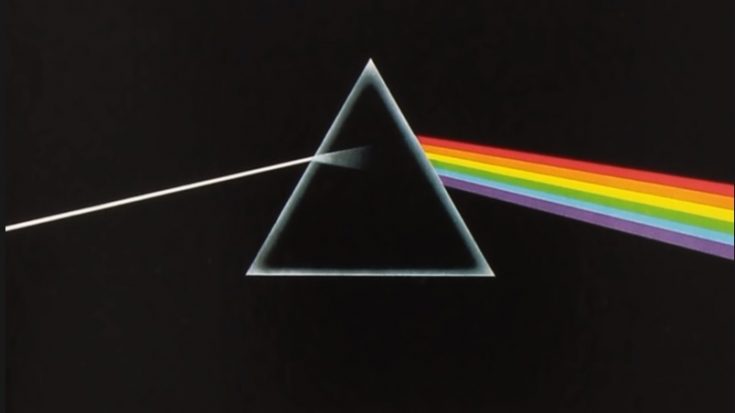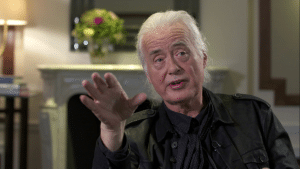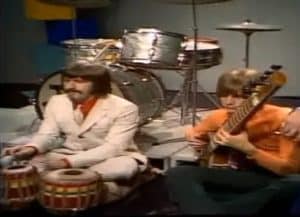Dark Side Of The Moon Facts All Fans Need To Know

Dark Side of The Moon album cover - Pink Floyd / Youtube
Dark Side of the Moon, a Pink Floyd classic, has two opposing elements—grandeur and melancholy. The two mixed up and created one of the best-selling albums of all time, and it was very much a product of the period it was released. Since its debut 50 years ago on this day, Pink Floyd’s Dark Side of the Moon has been on the Billboard charts longer than any other album in history – a feat that only these legends could pull off. Still in need of some TDSOTM trivia that you might’ve missed? You can check some of them in the list presented below.
- Late in 1971, Pink Floyd held a band gathering in Nick Mason’s kitchen, where they first discussed the ideas that would become The Dark Side of the Moon. As David Gilmour and Richard Wright focused on music, Roger Waters came up with the notion of factors that make people “crazy,” including worry, travel, money, ecological difficulties, and mortality.
- The album’s first track, “Us and Them,” was recorded at London’s renowned Abbey Road Studios by EMI on May 31, 1972. Whether on the road or working on other projects, recording continued through the end of 1972 and into 1973. Sessions ended on February 9, 1973, making the album one of the longest albums to be conceived by the group.
- A bootlegger captured one of the shows at London’s Rainbow Theatre in February 1973 and published the recording less than two months later; it reportedly sold 100,000 copies.
- After British blues-rock band Medicine Head released an album called Dark Side of the Moon in 1972 on John Peel’s Dandelion label, Pink Floyd almost renamed the album Eclipse (A Piece for Various Lunatics). Despite this, Pink Floyd kept the album’s original title, reasoning that nobody would get the two albums confused since Medicine Head’s album bombed. Per Waters’ comments back in 1972, he said: “I was against Eclipse and we felt a bit annoyed because we had already thought of the title before Medicine Head came out. Not annoyed at them, but because we wanted to use the title … But [Medicine Head’s] didn’t sell well, so what the hell.”
- According to Columbia Records, sales of TDSOTM have topped 50 million. Since its release, the album has lasted a record-breaking 971 weeks on the Billboard 200 chart.
- According to Neil deGrasse Tyson, the Moon has no dark side. The renowned researcher claims that he has spent years dispelling misconceptions about the topic – and blames Pink Floyd for this!
- The song “Brain Damage,” originally titled “The Dark Side of the Moon,” was renamed “Lunatic” before the band agreed on its current moniker during the recordings for Pink Floyd’s 1971 album
- The original title of what is now called “The Great Gig in the Sky” was “The Mortality Sequence.” It lacked the usual female vocals in favor of controversial BBC religious presenter Malcolm Muggeridge reading portions from the Book of Ephesians and reciting the Lord’s Prayer.
- Listen closely, and you can pick out the Beatles on The Dark Side of the Moon. Taking the orchestral arrangement of the Fab Four’s “Ticket to Ride,” the music is also paired up with Abbey Road doorman Gerry O’Driscoll reciting these lines: “There is no dark side of the moon, really. Matter of fact, it’s all dark. The only thing that makes it look light is the sun.”
- Richard Wright had sought a “smarter, neater — more sophisticated” design from George Hardie and Hipgnosis, who had previously designed the covers for Atom Heart Mother and Obscured by Clouds, for The Dark Side of the Moon. Out of seven choices, the band settled on the now-iconic prism/color beam design. Meanwhile, Waters proposed carrying the rainbow motif through to the package’s cover.
- Monty Python’s Flying Circus, whose BBC2 comedy sketch program was a favorite of Pink Floyds and watched by the band during breaks in the recording sessions for TDSOTM reaped financial benefits from the album’s popularity. Monty Python and the Holy Grail was the first feature film from the Python franchise, and it received funding from the likes of Elton John, Led Zeppelin, and George Harrison, among others.
- During the first Brit Awards, held in October 1977, The Dark Side of the Moon was up for Best British Pop Album, but it ultimately lost out to Pepper’s Lonely Hearts Club Band by the Beatles. In celebration of her Silver Jubilee, Queen Elizabeth II hosted a ceremony that paid tribute to her 25 years as queen.
- There was a legend during the CD craze of the late ‘80s that one German pressing facility exclusively produced copies of Pink Floyd’s The Dark Side of the Moon. There has been no confirmation of the story.
- Ten years later, rumors arose that TDSOTM would make for a great soundtrack to MGM’s The Wizard of Oz (1939). For example, “Money” begins with the “ching” of a cash register as Dorothy enters Munchkin Land, while “Brain Injury” coincides with the Scarecrow’s brainless dance number. Fans began referring to this “collaboration” as Dark Side of the Rainbow, while Pink Floyd members have always said it was merely a coincidence.
- After announcing the 50th-anniversary version of The Dark Side of the Moon, Waters disclosed that he had re-recorded the whole album without the rest of Pink Floyd. “I wrote The Dark Side of the Moon. Let’s get rid of all this ‘we’ crap!” Waters stated during an interview. “Of course, we were a band, there were four of us, we all contributed – but it’s my project and I wrote it. So … blah!”











